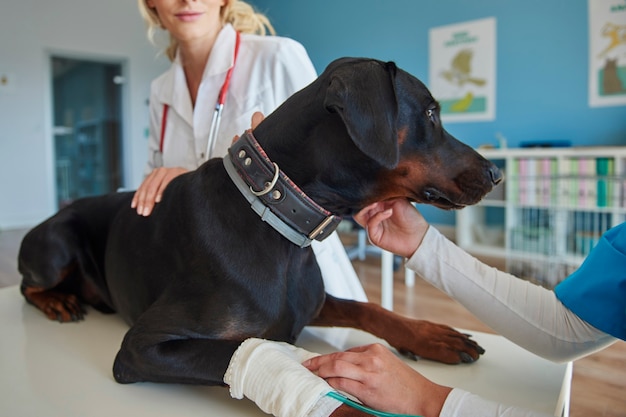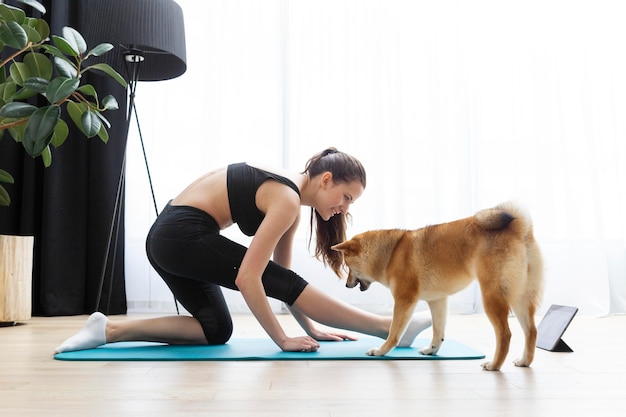The Importance Of Exercise For Canine Joint Health


Exercise for Joint Health in Dogs
Great news! With modern veterinary advances and regular care, our beloved dogs are living longer, more active lives. We're getting more years together with our pets than ever before. With those longer lifespans, however, we're also learning more about how to keep senior dogs or those who've experienced injury or ailments healthy and lively.
Just as in humans, as our dogs age, their joints may develop painful degenerative problems. Joint problems also arise due to inherited issues due to repetitive strain or simply from the wear and tear of daily life. Thoughtful, controlled exercise is one of the easiest ways to prevent, address, and reduce the impact of joint pain in dogs.
How Do I Know If My Dog Has Joint Pain?
No matter how expressive those puppy dog eyes are, our dogs can't actually communicate with us in words. Even dogs who learn to use communication devices, such as speaking boards or buttons, have only as many 'words' as we can teach them. So your dog will never sit next to you on the sofa to have a difficult conversation about joint pain.
Instead, your dog may be more hesitant to join you on the couch. She might lose weight or muscle mass in her hind end. You may notice that she moves stiffly after lying down for a while, first thing in the morning, or after intense exercise. There might be swelling in the area of a joint on one or more legs, or she may limp when she walks or runs.
If you're not used to looking for limping, watch your dog's legs as she runs. For most dog breeds, the diagonal pair of legs move at the same time. Each pair of legs should stretch the same amount forward and back and create parallel lines. At the walk, your dog may bob her head or stagger if she's feeling pain in a joint.
Another symptom of joint pain is… pain! If your dog yelps when you touch an area of her body, she needs to see a veterinarian to make sure nothing else might be amiss.
How Can Exercise Help?
Just like all the TV ads say, consult your doctor before beginning any exercise plan! This is as true for your dog as it is for yourself. Some joint pain may indicate more serious issues, such as muscle or tendon problems, which require different treatments. It's essential to know for sure that your dog has a joint problem that can be helped by exercise before beginning. The wrong activity, on the wrong ailment, can be more painful!
Exercise works to help joint pain in a number of ways. First, it rebuilds the muscle that helps hold the joint securely in place. More muscle means a more secure joint, which is less painful. Next, exercise also encourages the body to release positive chemicals called endorphins. These are natural painkillers, so by exercising, you're giving your dog the best possible medicine.
Another benefit of exercise is that it regularly stimulates the production of the fluids that lubricate the joints, adding increased cushion and comfort. Exercise also improves fitness and balance: your dog is less likely to suffer an accidental injury if she is in good health, steady in her movements, and strong in her body!
Starting Canine Rehabilitation
If your dog has been diagnosed by a veterinarian with joint pain and cleared for exercise, take a moment to plan first. Exercise for joint pain does not mean go run on the track twice a day for an hour if your dog has been most sedentary to this point. The golden rule will be no sudden changes. The slow, steady, consistent change will have a much greater effect on your dog's well-being.
Exercise can start at home and be quite simple: call your dog to come to you in another room if she doesn't follow. You can give her a small, low-calorie treat as a reward if that helps. If you don't already go for regular walks with your dog, start a short daily routine. It may seem like a lot of fuss just to walk once around the block, but you can increase the distance or intensity as your dog becomes more fit and comfortable. Classic games of fetch with family members are also a great way to easily add activity to your dog's daily routine without much effort.
For more serious joint problems, your veterinarian may also recommend visiting a rehabilitation specialist. There, you will learn about other specific activities that can improve your dog's joint health. Your dog may also benefit from specialized treatment, like utilizing an underwater treadmill, individualized stretching, or other exercises that can be done at home.
Old age doesn't have to rob our dogs of their active joy or mobility: with proper treatment and care, they can romp and frolic every day of their lives.




